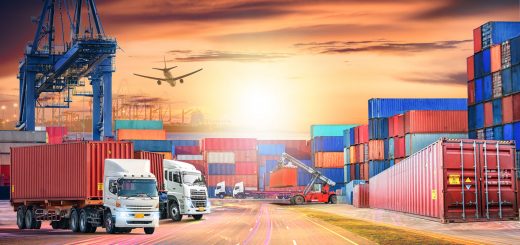Mergers and Acquisitions as a Growing Trend in Global Logistics

There have been well over 300 known cases of sealed Merger & Acquisition deals in shipping and Logistics alone across the globe in the last two years (Statista, 2019).
In view of the foregoing statistical fact, any keen observer of this very interesting global trend will be moved to ask: Why do companies merge or acquire other companies? Are there justifiable reasons or benefits for mergers and acquisitions? If there are, what are the potential risks and challenges involved? A single article may not sufficiently provide answers to all these questions, but a few attempts will be made to explore why mergers and acquisitions are on an upward trend, as well as the potential benefits of such ventures.
Mergers often occur when the ownership of a company is transferred or consolidated with another company or a group of other companies. It includes the consolidation of human, material, financial and technological resources under a ‘win-win’ arrangement for improved capacity to serve the growing demands of a clientele base or a targeted market. It is a competitive strategy where the merging parties deploy their collective resources to gain competitive advantage or grow their market share in specific markets or geographical area.
Acquisition, on the other hand, is when one company outrightly takes over another at a mutually agreed fee and definite terms of the acquisition. Acquisition in the logistics industry, for instance, is a strategy that drives organic (internal) growth and strengthens the competitive advantage of companies, especially in this highly fragmented industry.
Mergers and acquisitions (M&A) in logistics refer to the process of combining two or more companies to form a larger entity or acquiring one company by another. Mergers and acquisition activity in the logistics industry has been increasing in recent years due to several factors, such as the need for companies to expand their capabilities, increase market share, and enhance their competitive position.
Some of the recent Mergers and acquisitions activities in the logistics industry include FedEx’s acquisition of TNT Express, DSV’s acquisition of Panalpina, and XPO Logistics’ acquisition of Norbert Dentressangle. These mergers and acquisitions have resulted in larger and more diversified companies that can offer a broader range of services to customers.
Mergers and acquisitions in logistics can also result in cost savings through economies of scale and scope, increased efficiency, and improved technology. However, it can also lead to job losses and cultural differences between the merged companies.
Mergers and Acquisitions as Competitive Strategies
Some global logistics players have reached the advanced growth stages and enjoy distinctive levels of competitive edge in specific niche markets but the drive to diversify and consolidate their business portfolio and strengthen their brands largely accounts for why mergers and outright acquisitions are even considered in the first place.
For instance, some freight forwarders with great technological platforms and highly automated processes (which are of high value to customers) may not have temperature-controlled facilities like trucks and warehouses. So, demand for such services from a growing or long-term customer base will propel them into mergers, outright acquisitions or at least strategic partnerships with companies that have such capacity.
If a highly successful ocean carrier needs to diversify its business portfolio for competitive reasons, merging with or acquiring or an exclusive contract with a terminal operator and a freight forwarder could easily become viable options. Many Forwarders with growing prospects in E-Commerce, on the other hand, are also merging with or acquiring courier companies to facilitate last-mile deliveries.
Just a few days ago, LogisTics reported that WiseTech Global (an integrated Logistics and Supply Chain Solutions company) has acquired Containerchain (a company that provides a single platform for optimising the movement of containers from port to door), for real-time tracking, automation, connectivity, operational planning and container visibility across the supply chain.
Other examples include Lineage Logistics acquisition of Preferred Freezer Services; Maerskline’s acquisition of Vandegrift, Hamburg Sud and its merger with APMT and Damco; Panalpina’s acquisition of Interfresh Airfreight for the Customs clearance and last-mile distribution of imported perishables from Africa, Asia-Pacific and Latin America.
Recently, several talks on mega Mergers and Acquisitions even among the big global players like Panalpina and DSV; Ceva Logistics buying into CMA/CGM’s freight management activities are very good examples that M & As is a strategic trend that has continued an upward trajectory.
Merger and Acquisition as a strategic option certainly has its own challenges and risks, but the benefits thereof cannot be overstated. It’s a competitive model that enhances greater market dominance.
Though there are genuine concerns about the potential challenges, such as difficulty in determining the actual value of companies, mistrust and caginess among Forwarders in developing countries like Nigeria, the truth remains that the benefits, including access to hitherto limited market opportunities, human, material, intellectual, financial and technological resources justify a critical consideration of M & A as a winning strategic option in global logistics and that is why even the biggest players want to merge; acquire smaller players in niche markets in order to remain as competitive as possible for many years to come.
Read more: 5 reasons for investment and acquisitions



